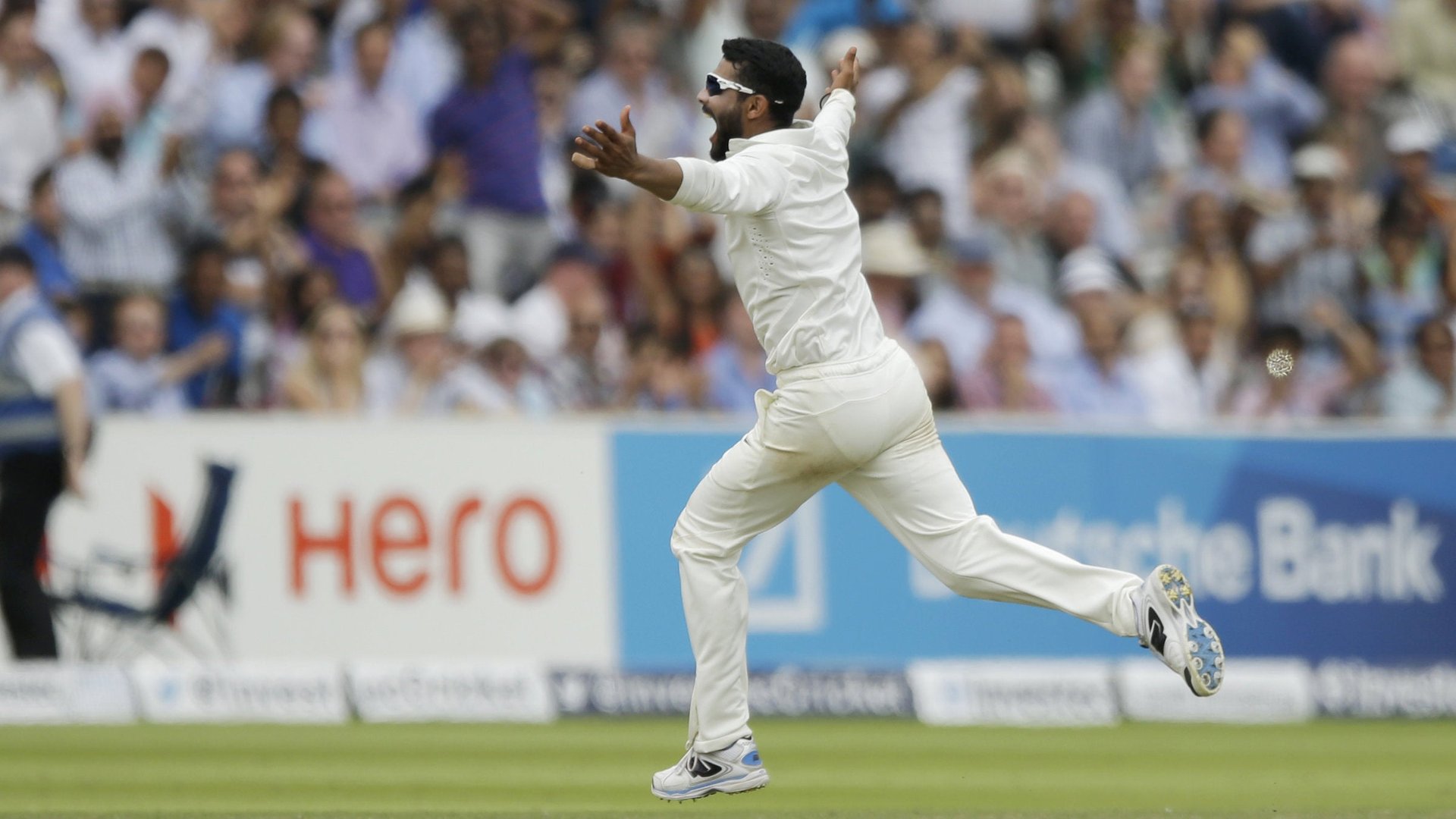Five reasons why India finally won a Test match at Lord’s
The last time India won a test match at Lord’s was on June 10, 1986. Back then only four of the current members of the Indian team had been born, and none are old enough to remember it. India’s victory today, in the second match of their tour of England, was also their first win outside of India for 16 games, since they beat the West Indies in Kingston three years ago.


The last time India won a test match at Lord’s was on June 10, 1986. Back then only four of the current members of the Indian team had been born, and none are old enough to remember it. India’s victory today, in the second match of their tour of England, was also their first win outside of India for 16 games, since they beat the West Indies in Kingston three years ago.
Here are five reasons why they finally managed to break their losing streak:
They didn’t panic on the first morning
The first Test of the series, in Nottingham, was a bore draw, thanks to a lifeless pitch. The surface was slow and low, offering little to batsman or bowler. It was a classic “chief executive wicket,” a strip designed to ensure that there was play on all five days of the match, at the expense of exciting cricket. In response, the wicket at Lord’s was the greenest seen in England for decades. (Green pitches tend to enable the ball to swing, making life easier for bowlers.)
When England won the toss and put India in to bat on the first morning, they had the best of the conditions. However, the Indian batsmen, led by centurion Ajinkya Rahane, were generally disciplined and ignored a long series of deliveries from the England bowlers that were designed to tempt them. Consequently, India’s first innings score of 295 was about 50 runs above par.
Jadeja played with aggression when it mattered
The build-up to the game was overshadowed by a row between England’s James Anderson and India’s Ravindra Jadeja that began during the previous Test (each player was reported to the game’s governing body by the other team). Neither was phased by the extra attention, but it was the cocksure Jadeja who rode out rare boos from the Lord’s crowd to swing the game in India’s favor. On the fourth day, India were wobbling at 203-6 when Jadeja came to the crease. He played high-risk, aggressive innings of 68 off 57 balls to demoralize England. He also took the final wicket of the game, running out the last English batsman, who was, of course, James Anderson.
They used their inside knowledge
The Indian coach, Duncan Fletcher, is one of cricket’s great observers. He also knows a thing or two about India’s current opponents, having successfully coached England for seven years in the 2000s. The tactic that ultimately won India the game—when pace bowler Ishant Sharma peppered England’s middle order with short balls in the second innings—had all the hallmarks of Fletcher’s instruction. During the Ashes in Australia earlier this year, England repeatedly wilted when Australia’s Mitchell Johnson attacked them with short balls into the body. Sharma’s adoption of Johnson’s tactics worked a treat, instigating a batting collapse that saw England fall from 198-5 to 223 all out on the final afternoon.
Sharma found his groove again
Ishant Sharma is a mercurial talent, who infuriates as often as he inspires. Despite his fast-bowler physique and a lion’s mane of hair, he often looks less than confident in himself. In India’s warm-up games against two English county sides, he looked timid and short on confidence, repeatedly no-balling as he stepped up to bowl. Lord’s saw an arrogant Ishant, happy to get in the faces of the batsmen and show some fury. He went wicketless in the first innings, overshadowed by his partner Bhuvneshwar Kumar, but, after removing Ian Bell with a peach of a ball in the second, he took six further wickets to record his Test best return of 7-74.
They learned some lessons from 2011
The last time India toured England, in 2011, was an unmitigated disaster. A more talented team than the current tourists were soundly beaten in all four Tests. Having played an Indian Premier League season and a World Cup back-to-back before the tour, half of the team were exhausted. They didn’t have time to play more than one warm-up game, so no-one was acclimatized to the unfamiliar English conditions. When players inevitably succumbed to injuries, they called up half-fit replacements. One such emergency call-up was barred from entering the country, as the team had forgotten to apply for a visa. Watching the team on the field, the Guardian quipped that “India’s body language is desperate. If this were a film, they’d be played by William H Macy.” So far in 2014, India look fit, motivated, and unified. Contributions are being made all down the order—a sign of a successful team. But they will need to be. Although England are in disarray, the next three Tests take place in the next three weeks. Such a demanding schedule will be tricky for any side, even a winning one.